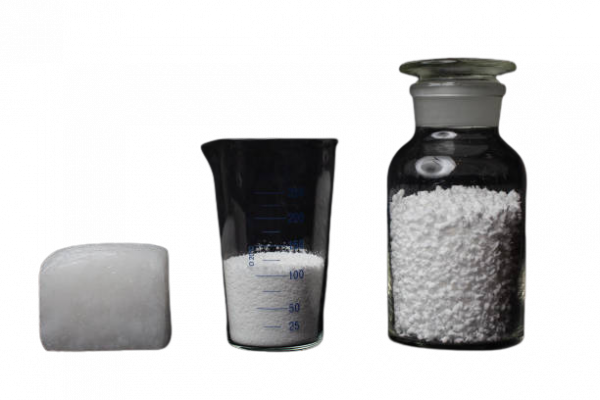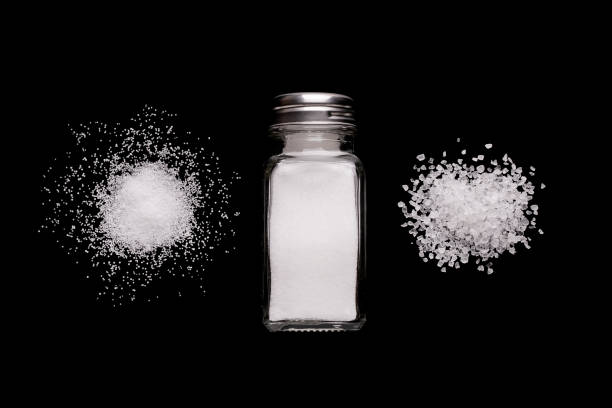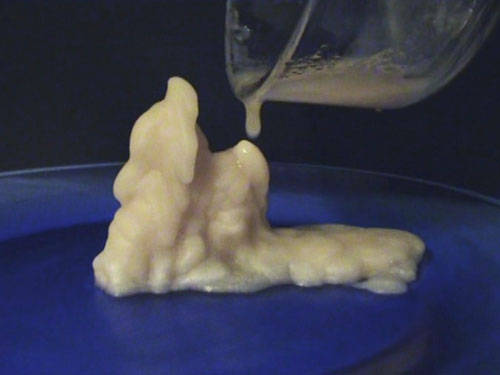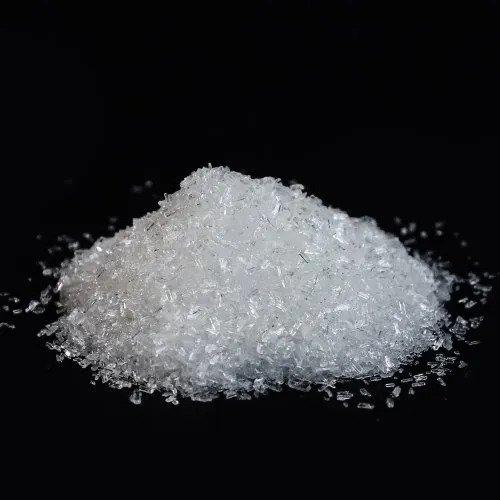Sodium Acetate
Sodium acetate is an organic sodium salt. It contains an acetate. ChEBI. Sodium Acetate is chemically designated CH3COONa, a hygroscopic powder very soluble in water. Sodium acetate could be used as additives in food, industry, concrete manufacture, heating pads and in buffer solutions. Sodium acetate can be produced industrially by reacting large amounts of glacial acetic acid with sodium hydroxide, as seen in the following reaction.


- Overview
- Application
- Spesification
Overview
Sodium Acetate, sodium salt of acetic acid, is a white or colourless crystalline compound, prepared by the reaction of acetic acid with sodium carbonate or with sodium hydroxide. There are commercially anhydrous salt or trihydrate form losing water at 58 C. Both are soluble in water and in ethoxyethane, and slightly soluble in ethanol.
Sodium acetate is the sodium salt of acetic acid with chemical formula is C2H3O2Na. Sodium acetate is an ionic compound with all the common physical properties of ionic substances. Sodium acetate may be found as an anhydrous salt or a trihydrate. Sodium acetate is a cheap chemical with a wide range of uses.
Manufacturing Process
Sodium acetate can be produced industrially by reacting large amounts of glacial acetic acid with sodium hydroxide, as seen in the following reaction.
C2H4O2 + NaOH → NaO2CCH3 + H2O
Application
Sulfuric Acid Neutralizer
Sodium acetate is used in the textile industry to neutralize sulfuric acid waste streams, and as a photoresist while using aniline dyes. It is also a pickling agent in chrome tanning, and it helps to retard vulcanization of chloroprene in synthetic rubber production.
Food Industry
Sodium acetate is used as a food additive and added to food to help prevent bacterial growth. Sodium acetate can be used as a neutralizer for basic or alkaline foods and as a buffer to help maintain a specific pH. Sodium acetate can also enhance flavor, and there are no known adverse effects on human health. Sodium acetate is used as a seasoning in the food industry for salt and vinegar flavor.
Chemical Industry
Sodium acetate neutralizes the sulphuric acid found in waste streams from textile industries. It is also used as a photoresist when aniline dyes are used. In the rubber industry, it delays the vulcanization of chloroprene in synthetic rubber. It acts as a sealant in concrete and lessens water permeation to prevent damage. It also helps remove stains, rust, and other impurities from metallic surfaces.
Chips Flavouring
Sodium acetate is the chemical that gives salt and vinegar chips their flavour. It may also be added to foods as a preservative; in this application it is usually written as “sodium diacetate” and labeled E262.
pH Buffer
As the conjugate base of a weak acid, a solution of sodium acetate and acetic acid can act as a buffer to keep a relatively constant pH. This is useful especially in biochemical applications where reactions are pH dependent.
Heating Pads
Sodium acetate is also used in consumer heating pads or hand warmers and is also used in “hot ice”. When sodium acetate trihydrate crystals (melting point 58 °C) are heated to around 100 °C, they melt. When this melt cools, it gives a supersaturated solution of sodium acetate in water. This solution is capable of supercooling to room temperature, well below its melting point, without forming crystals. By clicking on a metal disc in the heating pad, a nucleation center is formed which causes the solution to crystallize into solid sodium acetate trihydrate again. A flat, uneven metal disc is placed in the solution. A small amount of sodium acetate crystals is released when the disk moves. These crystals start a chain reaction of crystallization with the rest of the sodium acetate. This reaction is instantaneous, releasing a lot of energy stored in the sodium acetate crystal structure. The crystallization of sodium acetate is exothermic. This principle is used in heating pads. The heating pad is reusable since sodium acetate can return to a supersaturated liquid state when placed in boiling water and cooled to room temperature.
Spesification
| CAS NO. | 127-09-3 |
| EINECS NO. | 204-823-8 |
| FORMULA | CH3COONa |
| MOL WT. | 82.03 |
| H.S. CODE | 2915.22 |
| TOXICITY | Oral rat LD50: 3530 mg/kg |
| SYNONYMS | Acetic acid, sodium salt; Acetic acid, sodium salt (1:1); Sodium Ethanoate; Acetate De Sodium; Atrium Aceticum; |
| PHYSICAL STATE | White hygroscopic crystalline powder |
| MELTING POINT | 324 C |
| SPECIFIC GRAVITY | 1.45 |
| pH | 8.9 |
| VAPOR DENSITY | 2.83 |
| AUTOIGNITION | 611 c |
| NFPA RATINGS | Health: 1; Flammability: 1; Reactivity: 0; |
| STABILITY | Stable under ordinary conditions. |





